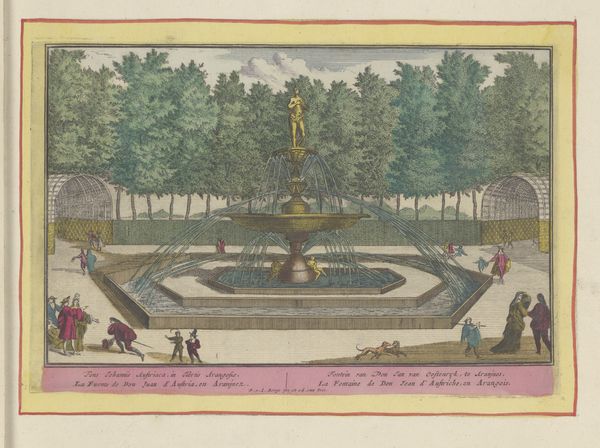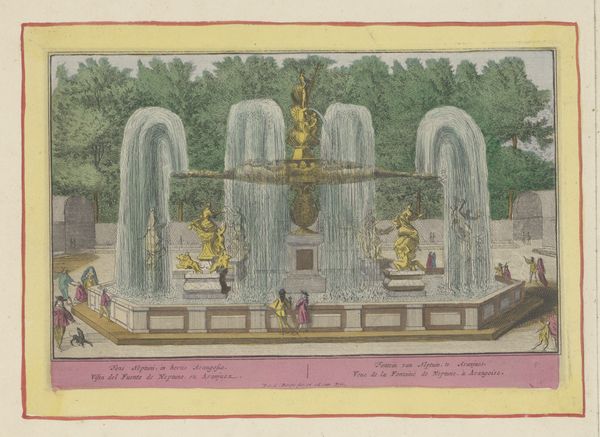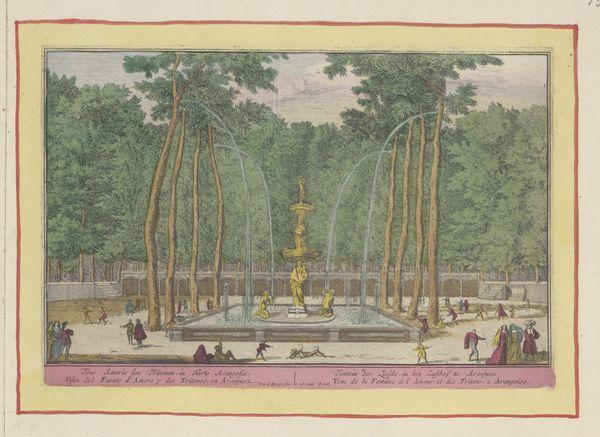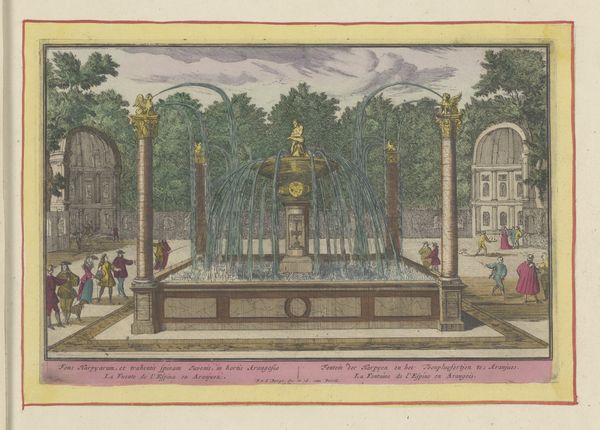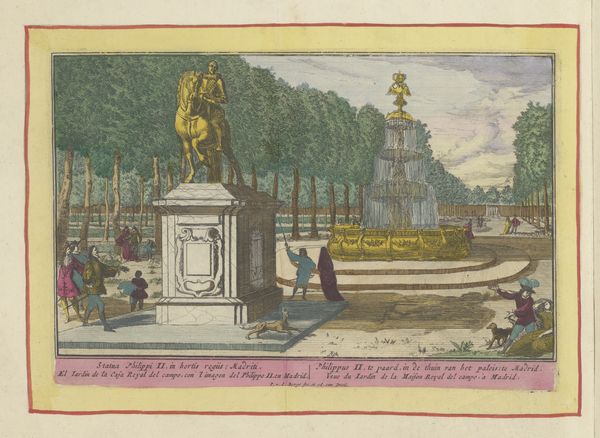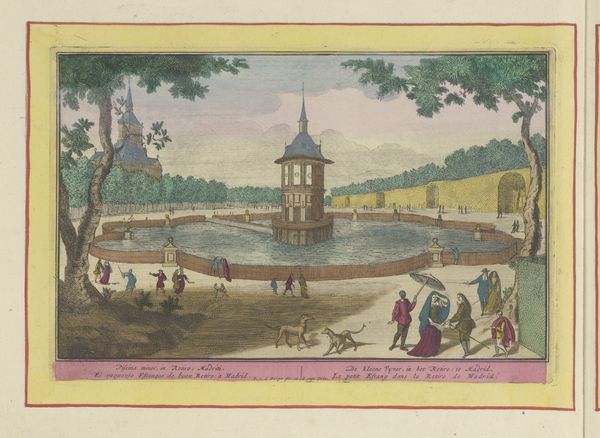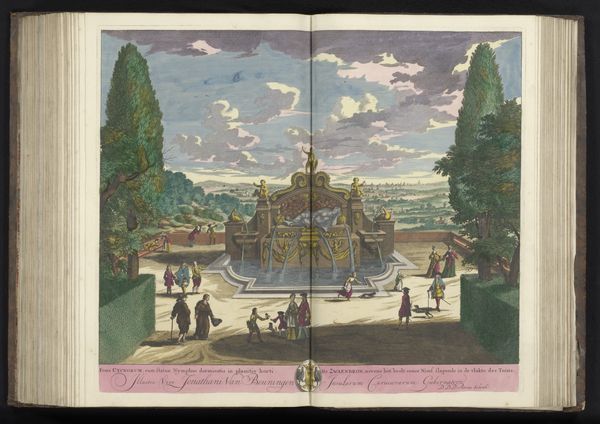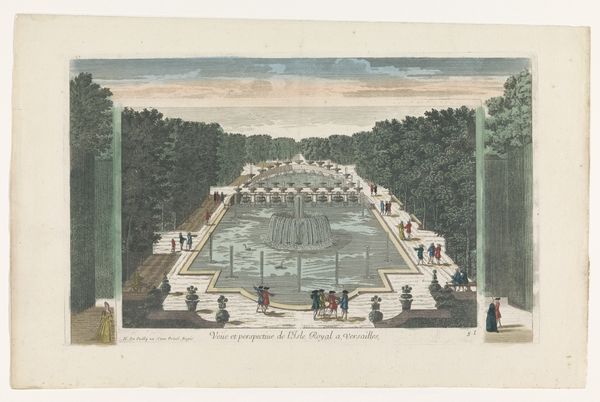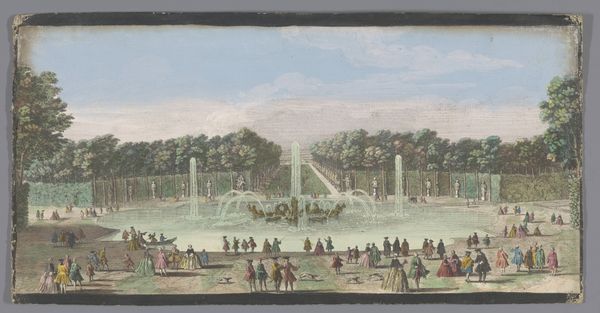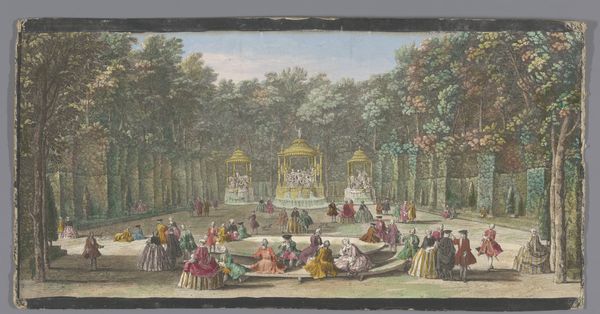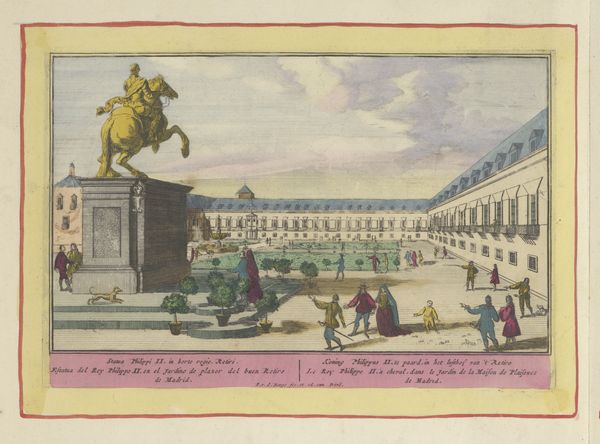
Fontein van Bacchus in de tuinen van het Koninklijk Paleis van Aranjuez 1694 - 1737
0:00
0:00
print, engraving
#
baroque
# print
#
landscape
#
cityscape
#
engraving
Dimensions: height 170 mm, width 258 mm
Copyright: Rijks Museum: Open Domain
Editor: Here we have Pieter van den Berge's "Fontein van Bacchus in de tuinen van het Koninklijk Paleis van Aranjuez," created sometime between 1694 and 1737. It’s a print, an engraving. It’s such a formal, organized scene, very much in line with Baroque aesthetics. What jumps out at you when you look at this image? Curator: The scene immediately positions itself within a framework of power and leisure. The location is the Royal Palace gardens, signifying wealth and authority. Consider how this print, as a medium, disseminates an idealized vision of courtly life. How does this image reinforce the social hierarchy of the time? Editor: It's definitely staged, isn't it? Everyone seems posed just so. Does that tell us something about the purpose of creating and circulating an image like this? Curator: Exactly. The "stage-like" quality suggests a carefully constructed narrative. Prints like these often functioned as visual propaganda, designed to project an image of sophistication, control, and abundance. Think about the intended audience, how did the Baroque aesthetic cater to specific socio-political ideals and consolidate power through spectacle? Editor: So, this isn’t just a nice picture; it's actively building a brand for the monarchy, you mean. How were artists perceived back then? Curator: Indeed. It speaks to the role of art in shaping public perception and solidifying authority. Also, reflect on how artists during that era, even whilst perhaps holding positions of privilege, may also be considered agents of the established order. Their skill and patronage becomes an integral part of statecraft. What are your thoughts about how art today continues to mirror or critique societal structures? Editor: That’s fascinating! I hadn’t considered the propagandistic aspect so directly. It gives me a new perspective on not just Baroque art, but how images operate even today. Curator: It’s a useful reminder to think critically about how cultural institutions and powerful interests use art and images to cultivate narratives that serve their agendas.
Comments
No comments
Be the first to comment and join the conversation on the ultimate creative platform.
